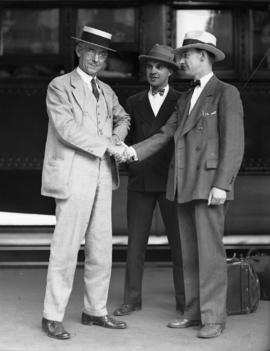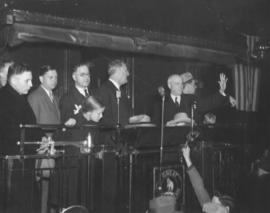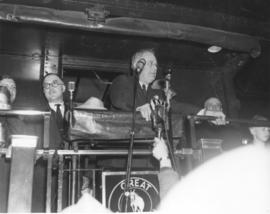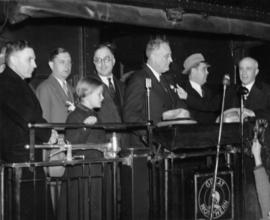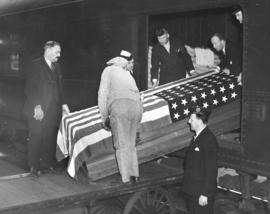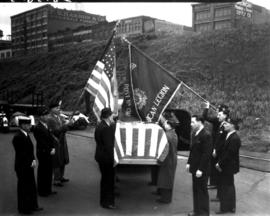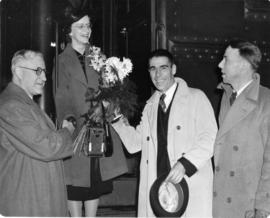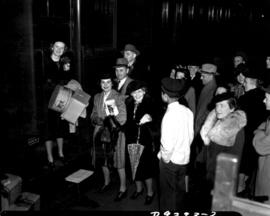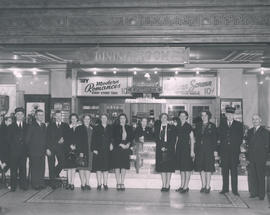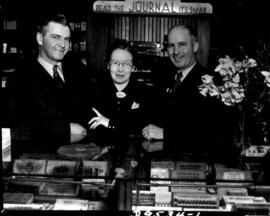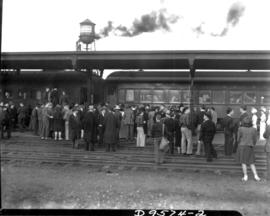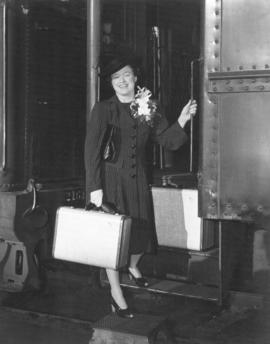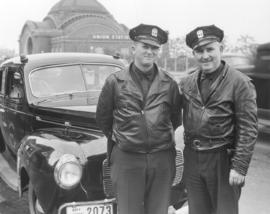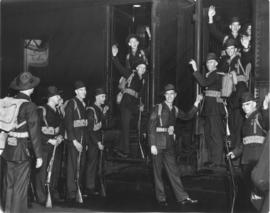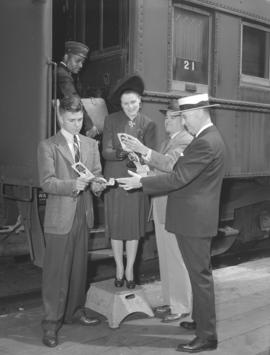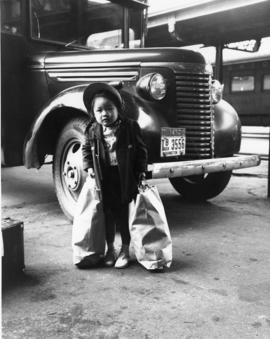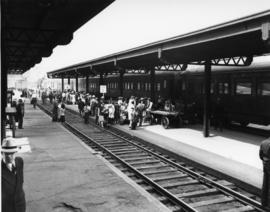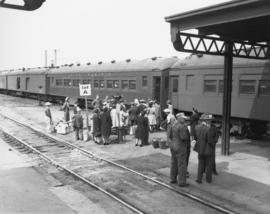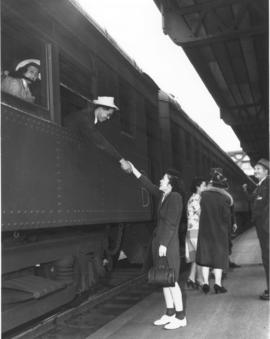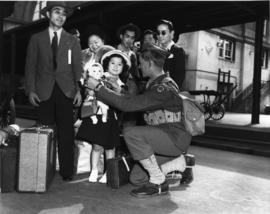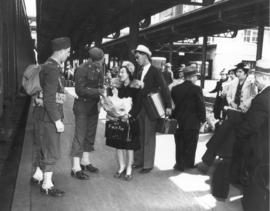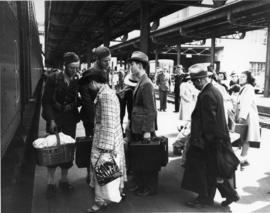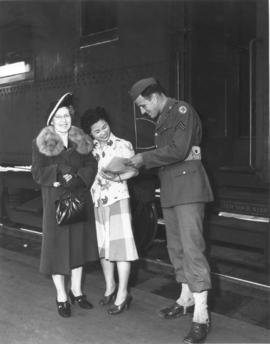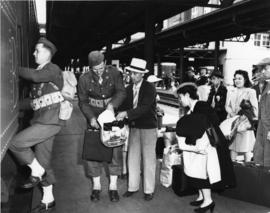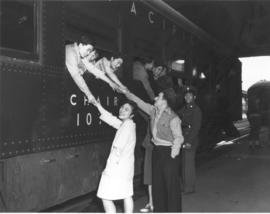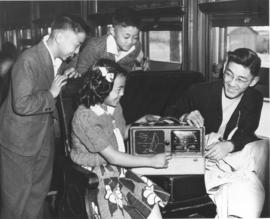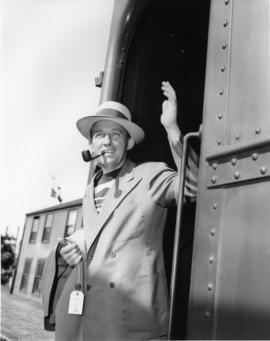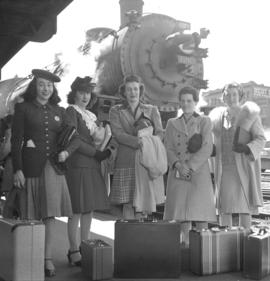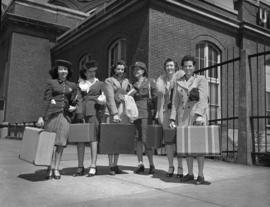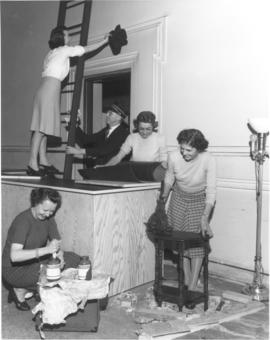- Item
- 1926-07-11
Part of Richards Studio Photographs
Fred S. Stover, national commander of the Veterans of Foreign Wars (VFW), upon his arrival in Tacoma on July 11, 1926. Mr. Stover, a prominent businessman from Butler, Penn., (L in picture) is met at Union Station by commanders of local posts. Shaking hands with Mr. Stover is W.A. Gartley, Wild West Post No. 91 commander; standing between them is Paul J. Roberts, South Tacoma post commander. Mr. Stover is on a tour of the Pacific Northwest in the interest of Foreign Veterans. Tacoma would be his temporary headquarters as he would take a tour of the city and trout fishing his first day here, then go to Seattle to meet with veterans there on July 12th. His plans included visits to local veterans hospitals and a banquet in his honor. (TNT 7-11-26, p. 1)
Stover, Fred S.; Roberts, Paul J.; Gartley, W.A.; Veterans of Foreign Wars (Tacoma); Shaking hands--Tacoma;
